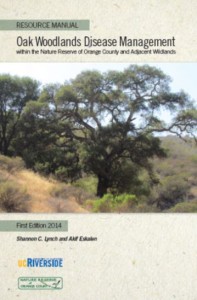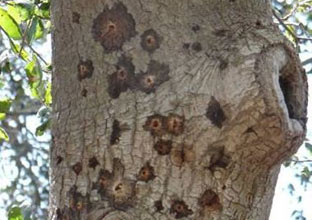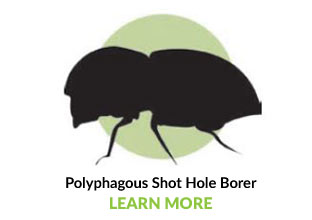 Initiated in 2012, the oak pathogen-monitoring project involved surveys conducted by University of California, Riverside for oak pathogens in coast live oak woodlands in four locations (Limestone Canyon, Serrano Creek, Wood Canyon, and Laurel Canyon) in the Coastal and Central Reserves. At each of these sites permanent plots were established and tree health, size, and symptoms were recorded and sampled for all pathogens. Collected trunk staining and cankered branch samples were analyzed using genetic techniques to identify pathogens. Results show the branch and trunk canker pathogen (Diplodia corticola) was recovered from symptomatic tissues of oak collected within the sampled coastal sites. In Europe this species is a known contributor to the decline of cork oaks. Management recommendations for minimizing the risk of spreading diseases among oak trees within the Reserve were highlighted in a workshop for resource managers on 11 December 2014 in Aliso and Wood Canyons Wilderness Park and Laguna Niguel Regional Park. A best practices manual for the management of oak pathogens within the NCCP-Reserve was completed and published in 2014.
Initiated in 2012, the oak pathogen-monitoring project involved surveys conducted by University of California, Riverside for oak pathogens in coast live oak woodlands in four locations (Limestone Canyon, Serrano Creek, Wood Canyon, and Laurel Canyon) in the Coastal and Central Reserves. At each of these sites permanent plots were established and tree health, size, and symptoms were recorded and sampled for all pathogens. Collected trunk staining and cankered branch samples were analyzed using genetic techniques to identify pathogens. Results show the branch and trunk canker pathogen (Diplodia corticola) was recovered from symptomatic tissues of oak collected within the sampled coastal sites. In Europe this species is a known contributor to the decline of cork oaks. Management recommendations for minimizing the risk of spreading diseases among oak trees within the Reserve were highlighted in a workshop for resource managers on 11 December 2014 in Aliso and Wood Canyons Wilderness Park and Laguna Niguel Regional Park. A best practices manual for the management of oak pathogens within the NCCP-Reserve was completed and published in 2014.
A PDF version of the resource manual is available from the Natural Communities Coalition.


